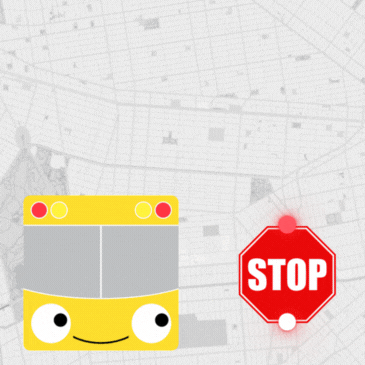
Beyond Death: Rabbeinu Bachaye, the “Second Body,” and the Post Gimmul Tammuz Leadership of the Nasi Hador
by Levi Y Keselman
In his commentary on Parshas Vayechi, Rabbeinu Bachaye offers a striking explanation of the Gemara (Taanis 5b) that “Yaakov Avinu lo meis” — our father Yaakov did not die. Rather than seeing this as mere metaphor, Rabbeinu Bachaye teaches that it describes a profound mystical truth: while ordinary tzadikim’s souls depart completely from the world after death, Yaakov Avinu’s soul remained bound to what Rabbeinu Bachaye calls a “second body” (guf sheni). This subtle, luminous body is not physical in the usual sense, yet it is real, serving as a garment for the soul and enabling Yaakov to remain meragish — able to sense and participate in the suffering and redemption of his children.
This, explains Rabbeinu Bachaye, is why the Torah never explicitly uses the word “death” regarding Yaakov, even though it records his embalming and burial. It is also why, in Midrash Eicha Rabbasi, Yaakov alone is described as “feeling” the churban and the future geulah — something that cannot be said of a soul entirely separated from this world. Uniquely, Hashem is called “קדוש יעקב” (“the Holy One of Yaakov”), a title given to no other patriarch, highlighting the singular holiness Yaakov attained.
Rabbeinu Bachaye further explains what enabled Yaakov to merit this: first, he embodied perfect balance — the tiferes that harmonizes the extremes of Avraham’s chesed and Yitzchak’s gevurah. Whereas most people, and even great tzadikim, lean toward one side, Yaakov’s entire life was the pursuit of the golden mean. Second, his life was “mitaso shleima” — all his children followed his path without deviation, reflecting a holiness that fully expressed itself in the next generation. Third, Yaakov inherited compounded kedushah: born to a father already circumcised, sanctified by the akeidah, and crowned by his own achievements, becoming the third pillar of the divine merkavah.
Because of this complete refinement and balance, Yaakov had no need for death to act as a cleansing or correction. Instead, his soul transitioned directly to the “second body,” remaining alive and present in the world.
In apparent contrast, the Ramban (Sha’ar HaGemul) explains that even the righteous must taste death, if only momentarily, before Techiyas HaMeisim, to purge any lingering trace of impurity absorbed since the Cheit Eitz Hada’as . The Gemara (Sanhedrin 98b) hints similarly, suggesting the angel of death will lightly touch even the righteous before resurrection so they experience the “taste of death.” This need is rooted in the cosmic shift after the cheit eitz hada’as, which caused hisarvus — a deep intermingling of good and evil so that even holiness carries hidden sparks of impurity.
In his maamar Bila Hamaves Lanetzach (5743), the Rebbe explains that this is precisely why death exists: to expel those traces of impurity. Before the sin, good and evil were fully separate, and there was no need for death. After the sin, death became necessary as a cleansing. But in the era of Moshiach, death itself will be swallowed forever (Yeshayahu 25:8), and the world will return to the pre-sin state, where bodies are permanently refined and death is unnecessary.
Here, however, Rabbeinu Bachaye’s teaching opens a deeper insight. The “second body” is not only a unique privilege of Yaakov Avinu but actually anticipates the state all of Klal Yisrael will attain after Techiyas HaMeisim: a purified, luminous body, free of decay and corruption. The difference is only in timing: most people must first undergo death, even if brief, to achieve this state. But the greatest tzadikim — those whose entire life is complete refinement — can move directly into the “second body,” remaining alive and present in this world.
In Chabad teachings, this is precisely how the nasi hador — the Moshe Rabbeinu of each generation — is understood. In Likutei Sichos vol. 2, p. 510 (Vayechi), the Rebbe explains that “Yaakov Avinu lo meis” reflects a truth about every nasi hador: the real life of a tzadik is “emunah, yiras Shamayim, and ahavas Hashem” — spiritual qualities that do not cease with physical death. Moreover, the Rebbe explains that as long as “zaro b’chaim” — the talmidim and followers who continue his path — remain alive, the Rebbe himself remains fully alive. In Hayom Yom (24 Teves), quoting Tanya (Iggeres HaKodesh 27), the Alter Rebbe teaches that a tzadik is “found in this world even more after his passing than during his lifetime,” because his spiritual garments remain, allowing him to continue guiding, influencing, and being meragish — responsive to the needs of his generation.
For Chabad chassidim, this is not abstract or metaphorical. The Rebbe, as the Moshe Rabbeinu of our generation, never appointed a successor and therefore remains our nasi hador — actively leading, directing, and interceding for his people. Even after Gimmel Tammuz, his presence and leadership remain real: through his teachings, through personal hashpa’ah (influence) that chassidim experience, and through the continuing fulfillment of his mission in the world. Though we cannot see or speak to the Rebbe in the ordinary physical sense, he remains the Rebbe — our leader and father, mitaso shleima, whose life continues in the generation that bears his vision forward.
In this light, the teaching that “Yaakov Avinu lo meis” is not only about Yaakov but a living truth about the nasi hador in every generation — and most concretely, about the Rebbe. Through complete refinement and spiritual balance, the Rebbe, like Yaakov, moves directly into the “second body,” remaining meragish and present among his chassidim and Klal Yisrael. This presence is not limited to memory or inspiration but is an ongoing, active leadership.
At the same time, the rest of Klal Yisrael will ultimately attain this state in the era of Moshiach, when death itself will be nullified, and all will receive bodies restored to their original, pure state — luminous, incorruptible, and eternal. Thus, the teachings of Rabbeinu Bahye, the Ramban, and the Rebbe’s Bila Hamaves Lanetzach converge: death is only needed to cleanse the admixture of good and evil; when that is removed — either by the tzadik’s own perfection or by the arrival of the Geulah — life becomes truly eternal.
In this way, the life of Yaakov Avinu and the ongoing leadership of the Rebbe reveal the deepest purpose of creation itself: that G‑dliness should not only be hidden in heaven but remain felt, seen, and alive — lo meis — here, in this world.
To add a personal note to this: I was 20 months old on Gimmel Tammuz, born on the Rebbe’s shlichus. I was raised in Tomchei Temimim; I lived and breathed the Rebbe’s Torah.
I am now a father of four young children (four of many to come, be’ezras Hashem). I have to imbue them with a love and dedication to a Rebbe Whom, when we last saw, I was separated from by 3,500 miles of ocean — a distance I keenly feel whether I’m at the Ohel, in 770, or standing outside the Rebbe’s room.
How do I do it?
Here’s the best I’ve got. There’s a story of a young girl who wanted to see the Rebbe blow shofar. She came to 770 on Rosh Hashanah morning, bright and early, and took a front seat. As time passed, more people arrived and slowly she was nudged further and further back, until she found herself at the back of the shul. When it came time for tekios, she saw nothing and heard nothing. After davening, she sat down and cried.
An elderly woman saw her and asked, “Maidele, farvos veinstu?” (“Little girl, why are you crying?”). She told her what had happened, and the woman replied, “Maidele, du host nisht gezen dem Rebbin, ober der Rebbe hot dir gezen.” (“You didn’t see the Rebbe, but the Rebbe saw you.”)
I once related this story at a farbrengen, and a fellow chossid yelled at me: “Are you satisfied with this?” — with living in a state where we don’t see the Rebbe, but the Rebbe sees us. I fell silent. Of course I’m not satisfied — but what choice do we have?
To end on an uplifting note: May we merit to see our Rebbe with the coming of Moshiach Tzidkeinu immediately, vehu yigaleinu, Amen.















